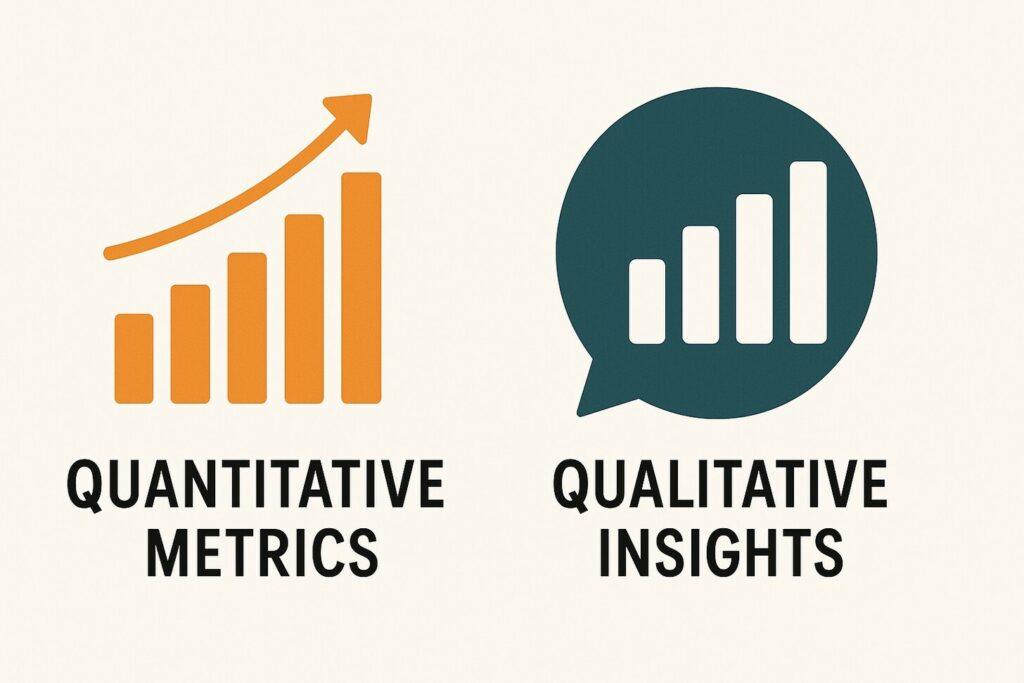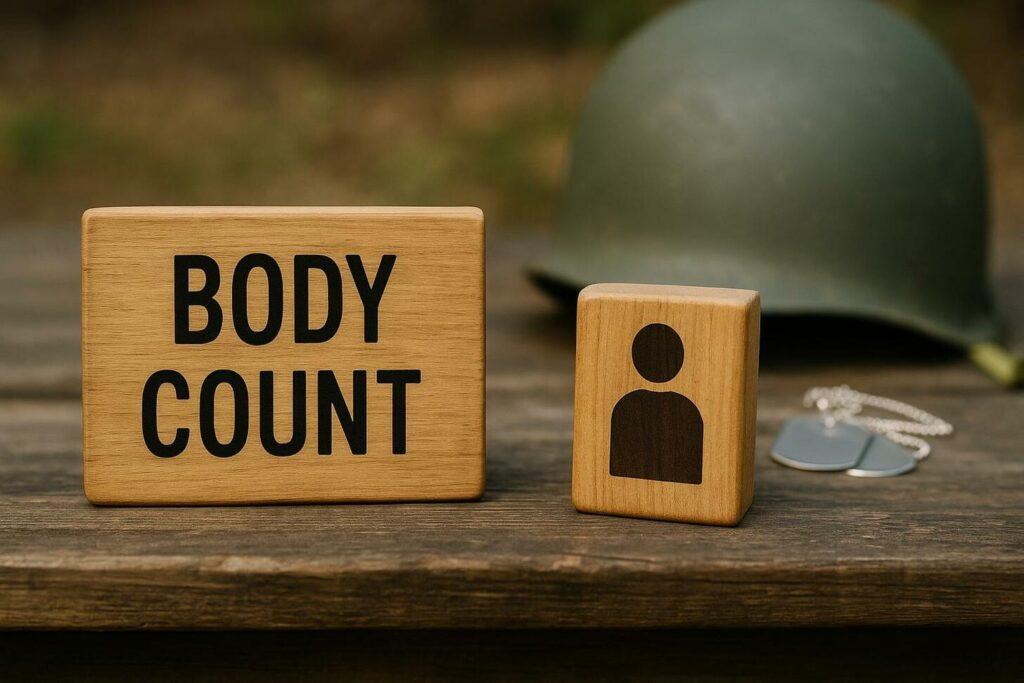Have you ever made a decision based only on numbers, only to realize later you missed the bigger picture? This is the heart of the McNamara Fallacy Mental Model. Named after a U.S. Secretary of Defense, this concept warns against relying solely on measurable data while ignoring factors that can’t be quantified.
During the Vietnam War, leaders tracked metrics like enemy casualties to measure success. But this focus on “body counts” overlooked critical factors like public support and morale. The result? A flawed strategy that failed to achieve long-term goals.
This isn’t just history. Imagine a teacher judging students only by test scores, ignoring creativity or teamwork. Or a company fixating on sales numbers while neglecting employee well-being. When we reduce complex situations to spreadsheets, we risk missing what truly matters.
Numbers are helpful, but they’re part of the story—not the whole story. The key is balancing data with human insight. After all, can you measure trust? Or passion? Some of life’s most important elements defy easy metrics.
Key Takeaways
- McNamara Fallacy Mental Model: Relying only on numbers can lead to poor decisions.
- Qualitative factors like trust or morale are often overlooked.
- The Vietnam War example shows the dangers of fixating on metrics.
- Education and business are vulnerable to this bias too.
- Always blend data with real-world context and judgment.
Mcnamara Fallacy Mental Model: Origins and Context

What happens when numbers overshadow reality? This question lies at the heart of a famous 20th-century decision-making trap known as the McNamara Fallacy.
Let’s travel back to the 1960s—a time when spreadsheets seemed like magic bullets for solving complex issues in the way that a Secretary of Defense would approach problems based on experience.
The Vietnam War and Robert McNamara’s Legacy
As U.S. Secretary of Defense, Robert McNamara brought his Ford Motor Company playbook to warfare. He’d been part of the “Whiz Kids”—a team that saved Ford using data-driven methods. But tanks aren’t cars, and wars aren’t assembly lines.
Military leaders began tracking enemy casualties like quarterly sales figures. Body counts became the ultimate metric. Yet this narrow focus ignored crucial factors: local support, troop morale, and political realities. As this historical overview explains, the strategy created an illusion of progress while missing the war’s true complexity.
From Ford Whiz Kids to Defense Management
The original idea made sense—bring order to chaos through measurable goals. But human conflicts resist simple math. Can you quantify a soldier’s courage? Measure a village’s loyalty?
McNamara’s approach revolutionized management controls, yet it also revealed a dangerous pattern. Schools now face similar risks when prioritizing test scores over critical thinking. Businesses repeat it when chasing profits at all costs.
Here’s a thought: Is counting numbers ever enough when lives hang in the balance?
The Core Principles of the McNamara Fallacy

How do we miss the forest for the trees? This concept thrives on two dangerous assumptions: what gets measured matters most, and what can’t be measured doesn’t exist. Let’s unpack why this mindset creates invisible traps.
The Reliance on Quantitative Data
Numbers feel safe. They’re concrete, comparable, and fit neatly into spreadsheets. Businesses track KPIs like weekly sales. Schools rank students by test averages. But here’s the problem: metrics often become goals instead of tools.
Imagine a hospital cutting wait times by rushing patients through—but missing critical symptoms. The data looks great. The outcomes? Dangerous. This problem with numbers in education mirrors wartime strategies where body counts hid collapsing public support.
| Aspect | Strengths | Weaknesses | Real-World Example |
|---|---|---|---|
| Quantitative Data | Easy to track | Misses context | Sales targets achieved, but customer loyalty drops |
| Qualitative Insights | Captures nuance | Hard to measure | High test scores but low student creativity |
Overlooking Qualitative Aspects
Ever seen a team hit all their targets but hate coming to work? Morale isn’t a spreadsheet column. Trust can’t be graphed. Yet these factors determine long-term success.
During product launches, companies might focus on download numbers while ignoring user frustration. Schools celebrate high grades but overlook stress levels. When we skip the “why” behind the numbers, we solve the wrong problems.
What’s your blind spot? Balancing hard data with human stories isn’t just wise—it’s essential.
Quantitative Metrics vs. Qualitative Insights

What do school rankings and corporate dashboards have in common? Both often prioritize numbers over the messy, human stories behind them. While metrics offer clarity, they can’t capture the full picture—like judging a book by its page count.
Misguided Focus on Measurable Data
Schools celebrate high test scores but miss declining student curiosity. Companies hit quarterly sales targets while customer loyalty crumbles. Why? Measurable data becomes the goal, not a tool for improvement.
Imagine two scenarios:
- A restaurant tracks five-star reviews but ignores complaints about rushed service
- A hospital reduces wait times by skipping patient questions
These systems look successful on paper. In reality? They’re solving the wrong problems. As this guide to mental models explains, balancing numbers with context leads to wiser choices.
Here’s the challenge: How do you measure trust in a team? Or the ripple effects of employee burnout? Some things that matter resist easy tracking. Yet they shape outcomes more than any spreadsheet.
Practical tips:
- Ask “Why?” behind every metric
- Pair sales numbers with customer stories
- Celebrate unmeasurable wins like creative breakthroughs
Data lights the path—but human insight shows where to step next.
Implications Across Different Fields

Numbers don’t lie—but sometimes they don’t tell the whole truth either. From classrooms to operating rooms, organizations often confuse measurable outputs with real success. Let’s explore how this plays out in three critical areas.
Education: The Test Score Trap
Imagine a school where every student aces math tests—but can’t solve real-world problems. A 2022 Harvard study found schools prioritizing standardized scores saw 23% fewer creative projects. Teachers report feeling pressured to “teach to the test,” sidelining skills like teamwork and critical thinking.
What happens when a child’s curiosity isn’t graded? We risk creating generations great at memorization, but unprepared for life’s unscripted challenges.
Healthcare and Business: Beyond the Numbers
Hospitals track wait times religiously. But one Midwest medical center discovered a problem: faster service correlated with more misdiagnoses. Nurses rushed through vital questions to hit targets.
In business, a tech company celebrated hitting sales goals—while employee turnover doubled. Surveys revealed staff felt like “metrics machines.” Performance numbers looked stellar, but the team was crumbling.
Here’s the twist: Companies blending data with employee feedback see 34% higher retention (Gallup, 2023). Patients rate hospitals higher when doctors spend extra minutes listening—even if wait times increase.
Can your spreadsheets capture trust? Or measure a team’s spark? The best outcomes happen when numbers and people insights work together.
Real World Examples and Lessons Learned

What can history teach us about modern decision-making? Let’s explore two powerful stories—one from a jungle battlefield, another from corporate boardrooms—that reveal the high cost of tunnel vision.
Mcnamara Fallacy Mental Model: Vietnam’s Body Count Trap
In the 1960s, military leaders tracked enemy deaths like baseball scores. Higher numbers meant “winning,” right? But this focus created a dangerous illusion. Soldiers reported inflated counts to please superiors, while villagers grew hostile to foreign troops. By 1968, U.S. forces had “won” every battle but lost public support—a key factor in the war’s outcome.
Modern Metrics Mayhem
Fast-forward to 2022: A delivery company punished drivers for late packages. Workers skipped safety checks to hit targets—accidents jumped 40%. “We became robots chasing numbers,” one driver admitted. Meanwhile, a tech firm celebrated user growth while ignoring complaints about buggy features. Both companies faced public backlash within months.
| Context | Metric Used | Overlooked Factors | Outcome |
|---|---|---|---|
| Vietnam War | Enemy casualties | Local trust, political will | Strategic failure |
| Delivery Company | On-time rate | Driver safety, vehicle maintenance | Increased accidents |
| Tech Startup | User sign-ups | Product quality, feedback | Brand damage |
These cases share a common problem: mistaking measurements for meaning. Schools that prioritize test scores over curiosity face similar issues. What if we paired sales charts with customer interviews? Or balanced student grades with creativity assessments?
Here’s a question worth pondering: How many unmeasurable wins are we missing while chasing perfect numbers?
The Mcnamara Fallacy Mental Model in Decision Making

How do you make choices when numbers and stories collide? Smart leaders know metrics are tools, not answers. As this guide to decision pitfalls explains, avoiding tunnel vision requires blending hard facts with human experiences.
Integrating Data with Human Judgment
A sales team hits targets but loses loyal customers. Why? They chased numbers, not relationships. Try this: pair quarterly reports with client interviews. Ask “What frustrates you?” alongside “How many units sold?”
Schools face similar traps. A teacher shared: “We celebrate test scores but miss students’ anxiety.” Her solution? Track grades and host weekly reflection circles. Data shows progress; stories reveal the path forward.
Strategies to Mitigate the Fallacy in Business and Education
1. Ask “Why?” three times: When metrics spike, dig deeper. Is production up due to innovation… or corner-cutting?
2. Create mixed dashboards: Add columns for customer quotes or team morale scores next to sales figures.
| Approach | Focus | Tools | Impact |
|---|---|---|---|
| Quantitative | Numbers & trends | Spreadsheets, KPIs | Clear benchmarks |
| Qualitative | Stories & context | Surveys, interviews | Deeper understanding |
| Balanced | Both | Hybrid reports | Smarter decisions |
A hospital reduced ER wait times by timing consultations. But patient complaints rose. Solution? They kept tracking speed and added a satisfaction survey. Result? Happier patients, better care.
What’s one unmeasured factor affecting your team’s success today?
Conclusion
In a world obsessed with metrics, it’s easy to confuse spreadsheets with success. History shows us the risks of leaning only on numbers—from wartime strategies that ignored public sentiment to companies prioritizing profits over people. Data lights the path, but human stories reveal the terrain.
The lessons here are timeless. Schools thrive when they value curiosity alongside test scores. Businesses last longer when they track employee well-being as closely as sales figures. Even in healthcare, listening to patients proves as vital as reducing wait times.
Next time you’re faced with a tough choice, ask: “What’s missing from these charts?” Pair your spreadsheets with conversations. Balance quarterly reports with team feedback. Remember—the best decisions use numbers as tools, not answers.
Ready to see beyond the dashboard? Start small: tomorrow, track one measurable goal and one unmeasurable factor. You might discover what truly drives success in your work—and life.


